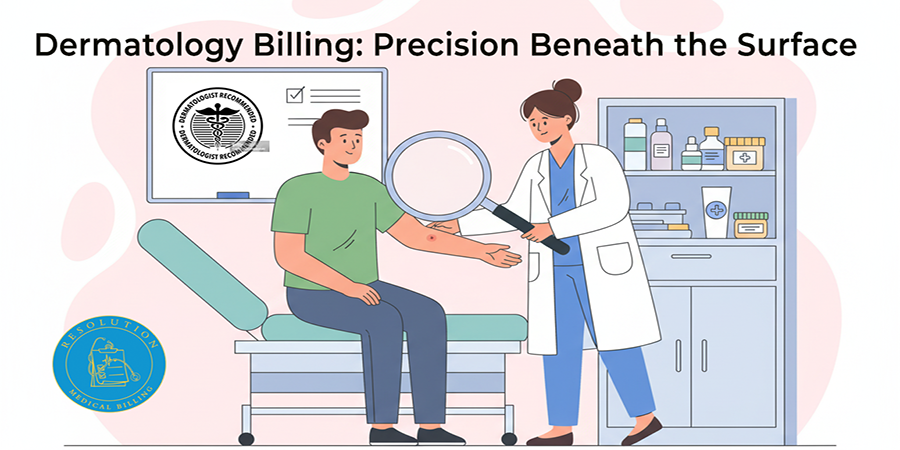Dermatology blends clinical care with procedural complexity. From biopsies and excisions to phototherapy and laser treatments, every service comes with its own documentation and coding requirements. Managing these correctly isn’t just administrative; it’s essential to the financial health of a dermatology practice.
Why Dermatology Billing Is Exceptionally Detailed
Few specialties have a wide range of coding like dermatology. One visit might include a full skin exam, a biopsy, or cryotherapy session; all under different coding rules and global periods. For example:
- CPT 11102–11107 (biopsies) require documentation of method and anatomical site.
- CPT 17000–17004 (actinic keratosis destruction) vs. 17110–17111 (benign lesions) often trigger denials if lesion type or count isn’t clear.
- CPT 17311–17315 (Mohs surgery) demands precise intraoperative notes and mapping to meet payer standards.
Missing details like lesion size or pathology results can be enough for payers to reject or deny payment.
Common Billing Challenges
- Modifier Confusion: Modifiers like -25 and -59 are frequently misused. A separate E/M service on the same day as a biopsy must be clearly documented as distinct to justify modifier -25.
- Global Period Errors –Understanding whether a visit falls inside a procedure’s global period (0, 10, or 90 days) is key to avoiding duplicate billing.
- Cosmetic vs. Medical Documentation: Cosmetic procedures are rarely covered, but accurate ICD-10 coding (for conditions like hyperhidrosis or rosacea) can establish medical necessity where appropriate.
- Authorization Gaps: Treatments such as phototherapy (CPT 96910) or laser destruction (17107) often need prior approval and frequency tracking.
The Value of Specialized Knowledge
Dermatology billing requires more than general revenue cycle management experience. Teams trained in this specialty understand lesion-based billing, modifier logic, NCCI edits, and payer-specific nuances that affect reimbursement. They know what documentation supports CPT accuracy and what language payers look for in clinical notes.
When done correctly, accurate coding leads to fewer denials, shorter A/R cycles, and better overall revenue integrity, without adding administrative burden to the provider’s day.
In Summary
Dermatology is defined by precision, and its billing should be too. Attention to coding, modifiers, and documentation isn’t only compliance; it’s how practices sustain revenue and focus fully on patient care.





